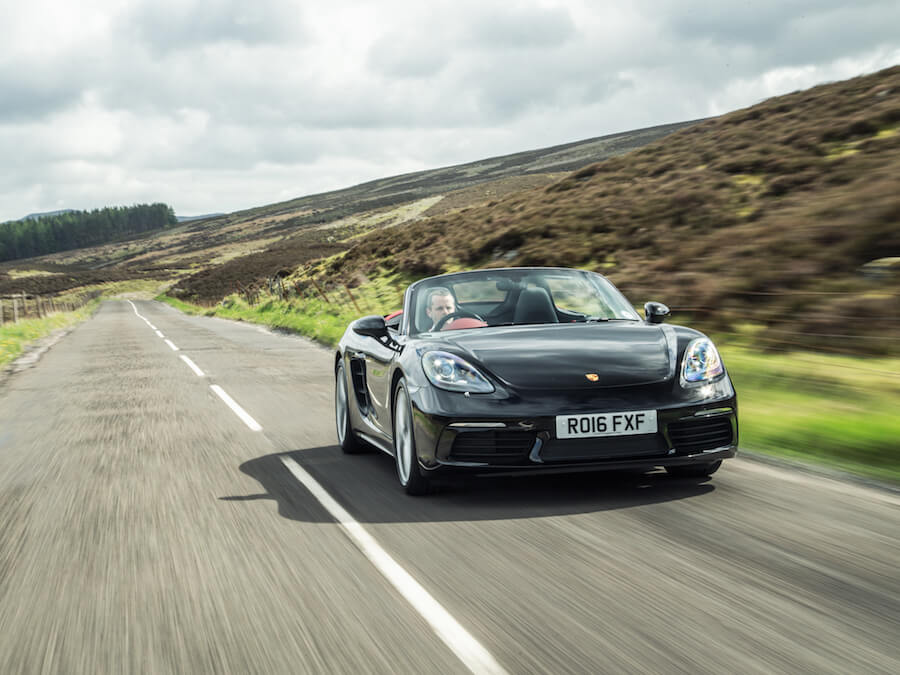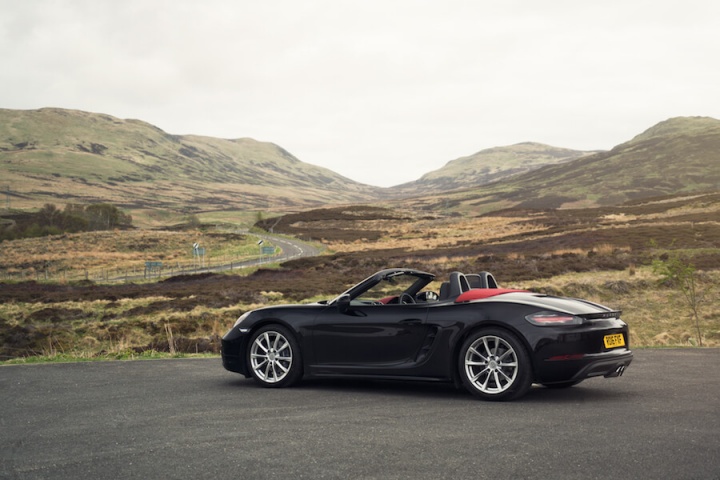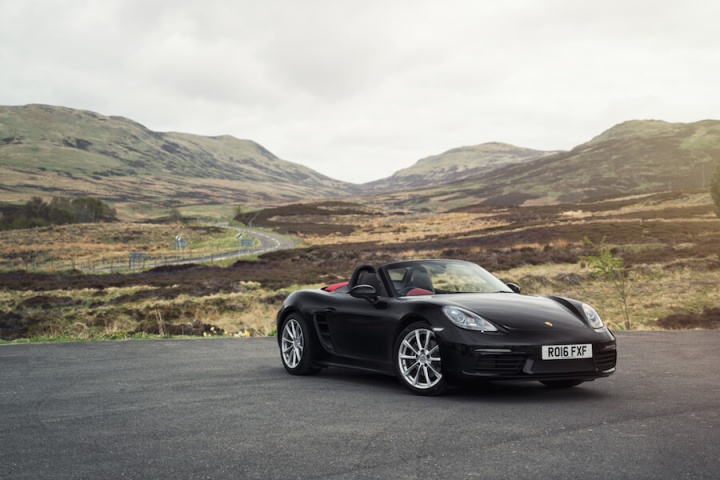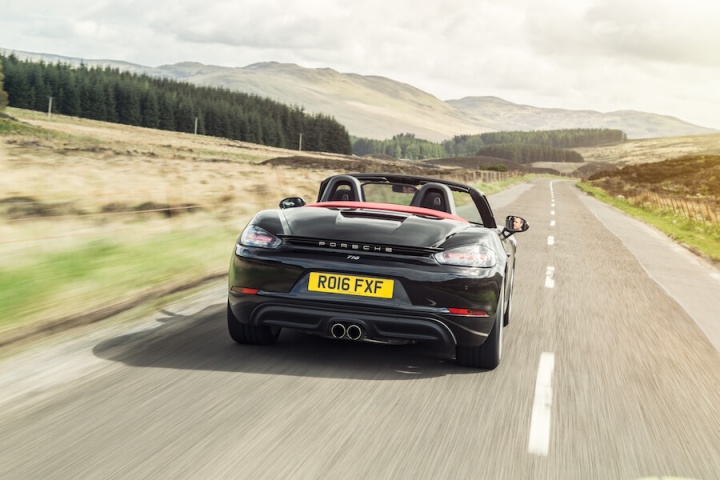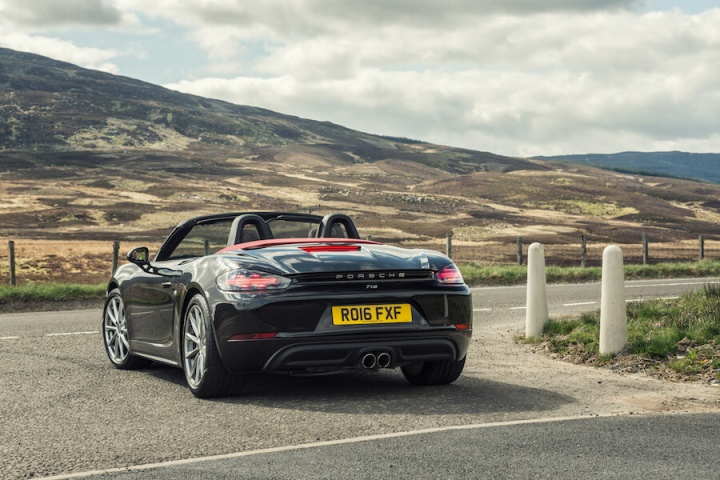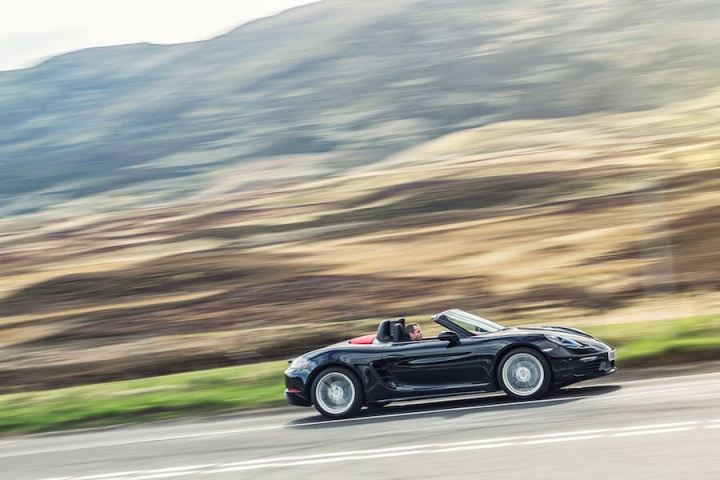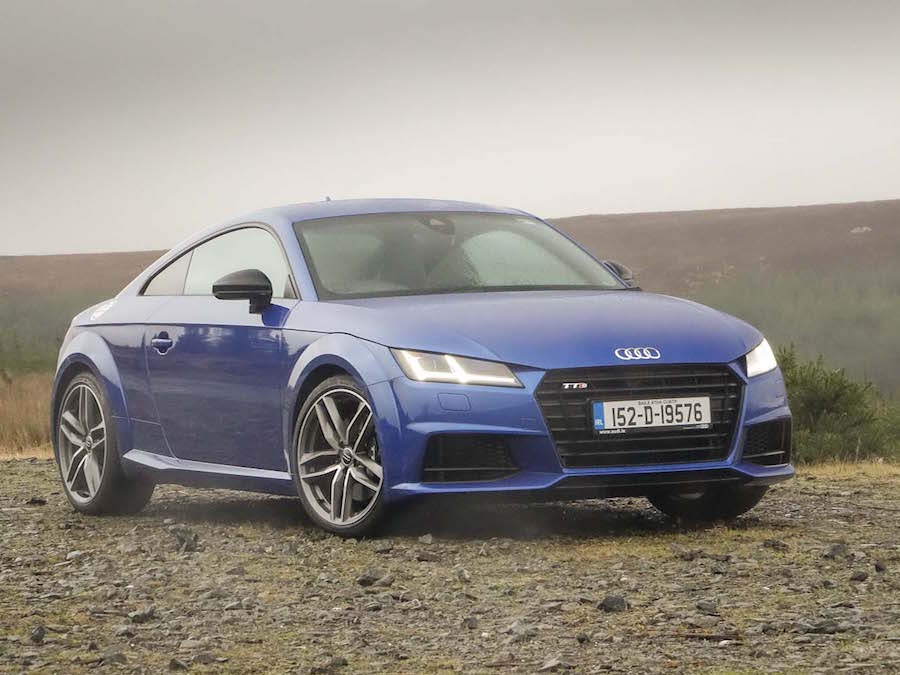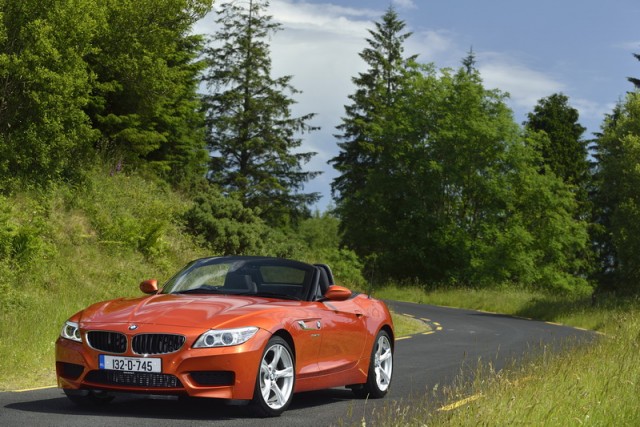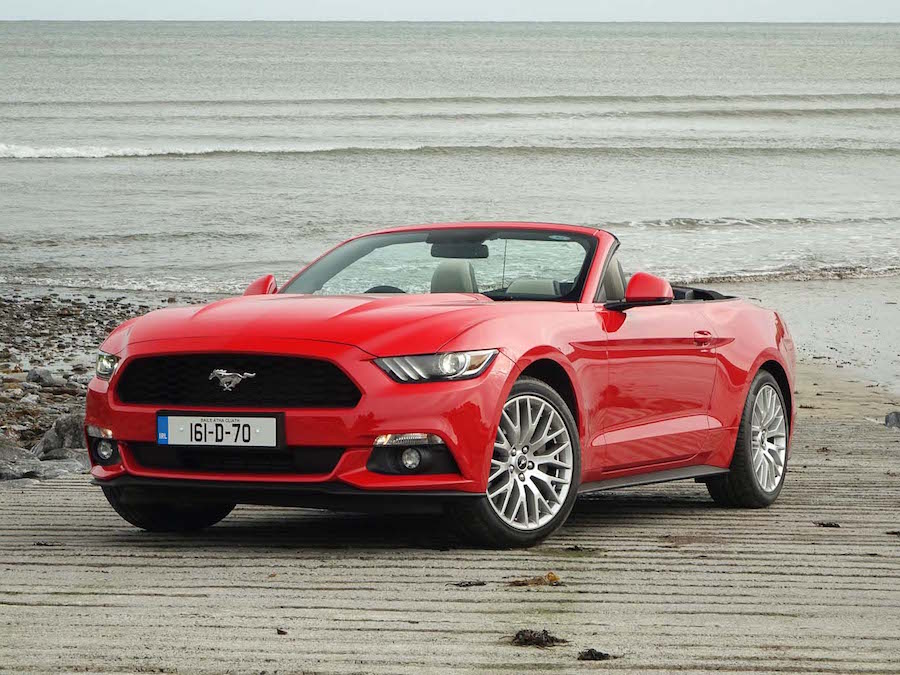Porsche's new 2.0-litre engine has an astonishing mix of performance, economy and flexibility, and the 718 Boxster has brilliant handling, sharper styling and great quality, but the noise it makes won't appeal to all, it has a plain cabin and it's pricey.
In the metal
Porsche has improved the cabin's layout with a nice new touchscreen that includes such things as Apple CarPlay, and it both looks good and works well. The rest of the cabin is much as before though - a slightly scatter-shot button layout and the same, familiar three dials behind the steering wheel. It all works well enough, but there's not much inspiration in there.
Of course, one of the Boxster's attributes is that it's surprisingly practical. There are but two seats, but they are set in a roomy cabin that is comfortable for a long journey. The front and rear luggage compartments are big enough to be useful and the convertible hood powers up and down with commendable speed - and you can do that when the car is travelling as fast as 60km/h. I think the 718 also looks better than ever. Porsche has tweaked the headlights and the bumpers a bit compared to the old '981' model and it looks a little sharper and better defined now.
Driving it
Let's just remind everyone, for a moment, of how many great four-cylinder Porsches there have been. The original 356, of course, was a four-pot car with essentially a modified Beetle engine in the back. The original Porsche 911 came in four-cylinder form as the 912 and the 914 sold in the seventies was Porsche's first mid-engined car. The Porsche 924 may have had the engine from a van in it, but it's still a great car to drive and there's no doubting the performance of the later 944, or the incredibly balanced handling of the later 968 Clubsport model. Let's also not forget that the 919 hybrid racer that has now won Le Mans twice on the bounce uses a four-cylinder engine. And now the new 718 Boxster takes its nominative numerals from the small, light and rapid 718 and 718 RSK racers of the early sixties.
Which perhaps doesn't explain quite why Porsche aficionados are so up in arms about the 718 Boxster's new four-cylinder engine. Since birth the Boxster, and the Cayman coupe it sired, have been powered by slightly down-sized, down-powered versions of the 911's legendary flat-six, which finished production recently in 2.7 and 3.4-litre forms. Now, there were many, many reasons for loving those flat-six engines, not least the metallic roar that came from the exhausts as you passed 4,500rpm, which could make every run to the shops feel like a lap of La Sarthe.
The four-cylinder engine doesn't have that. While the newly-turbocharged 911 has managed to retain at least some of the classic sound, the 718's flat-four is rather different. It idles with lumpy, but not especially musical, intent and when you rev it there's a rather pleasing flat, booming blat than comes out. It sounds like a cross between a classic Subaru Impreza rally car from the '90s and a highly modified (original) Volkswagen Beetle. It's neither sonorous nor symphonic in the manner of the old flat-six, but I have to say it grew on me, in spite of the fact that neither the pitch nor the tone ever changes. I can see why true-blue Porsche-philes have, shall we say, 'issues' with it, but I liked it.
Besides, if there is a lack of musicality, there are compensations elsewhere. As someone who still goes gooey for good engineering, there's a certain level of fanboy excitement in the fact that this engine produces 150hp from each litre, totalling 300hp, which is only 11hp less than the old 3.4-litre flat-six. That's prodigious power for something that weighs a mere 1,440kg and there's more - a diesel-like 380Nm of torque that comes on song below 2,000rpm. This is a very clever engine.
Driving the rear wheels (of course) through Porsche's own PDK seven-speed dual-clutch gearbox, it has performance that is simply electrifying. Now, I'm going to suggest that, in spite of its greater levels of efficiency and the lovely, metallic shift paddles, you should not go for the PDK. It feels a little awkward in its shift patterns at times, and the way it shunts in and out of stop-start in traffic can be annoying. Go for a manual and enjoy yourself more.
That should also cover up what feels like a little low-down turbo lag, but what is actually really gearbox-lag, as the PDK makes up its mind about what it's going to do. In reality, the engine is ready for action from as little as 1,200rpm and its performance is simply exceptional. Who cares about the noise when (with the optional launch control mode) you can slingshot to 100km/h in just 4.7 seconds? The 2.0-litre turbo has a relentless feel to it, not seeming to run out of puff at higher rpm as some turbo engines do. It's quite addictive.
Better yet, it's genuinely frugal. On one lengthy motorway run, we managed to beat the official combined fuel economy figure and scored 42mpg. Some people around here make fun of me for trying to extract decent economy from sports cars, but my argument is what's wrong with efficiency?
It's not as if the 718 has been downgraded to Dacia status in search of economy. This is still a remarkably well-balanced car to drive. On patchier back-roads, the ride can get a touch firm, even with the dampers on the soft setting, but it's never enough to much upset the Boxster's composure. The steering is the highlight, though. Porsche's engineers have pretty much cracked how to make an electrically boosted power steering system feel and respond like an old-school hydraulic one, and the 718's feels Gillette-sharp at the wheel rim. Incidentally, that wheel rim is perfectly round, not squared off at the bottom. Pointless fads have no place in a Porsche cabin.
What you get for your money
Standard equipment isn't bad, and €70k (including the PDK gearbox) doesn't seem all that terribly expensive when you remember that some Hyundais now break the €50k barrier. Standard kit includes man-made leather and Alcantara seats with electric adjusters, the all-electric roof in a variety of colours, an automatic rear wing, air conditioning, bi-Xenon lights with LED daytime running lamps, Porsche's Communication Management system with mobile phone connectivity and the touchscreen interface. The only problem is that when you start dipping into the options list, it can get scary expensive scarily quick.
Summary
Will the lack of noise and cylinders put you off the new Porsche 718 Boxster? Well, it wouldn't do so for me, I have to say. Yes, it is a shame that the old flat-six song has been sung, but there is such engineering prowess here, such performance and such efficiency that I don't think you can seriously quibble with it.

